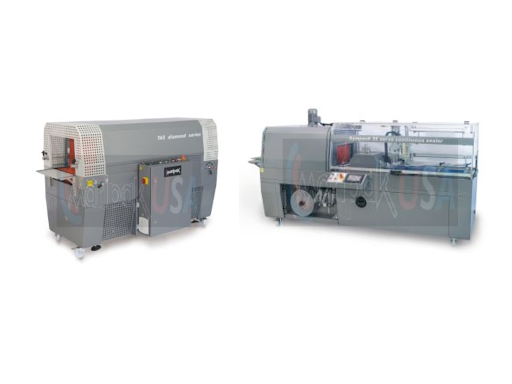Polyolefin shrink machines are a cornerstone of efficient, professional-grade packaging across industries like food, cosmetics, pharmaceuticals, and electronics. Known for their compatibility with polyolefin shrink film—an extremely durable, non-toxic, and environmentally friendly material—these machines ensure products are securely sealed, aesthetically packaged, and protected from damage. However, like any high-precision equipment, polyolefin shrink machines require proper handling to deliver optimal results.
Whether you’re new to shrink wrapping or a seasoned operator, avoiding common mistakes can significantly improve performance, reduce film waste, and extend the life of your equipment. In this blog, we’ll explore seven key mistakes to avoid when using a polyolefin shrink machine.
1. Using the Wrong Film Type or Size
Polyolefin shrink machines are specifically designed to work best with polyolefin film, a material praised for its strength, clarity, and FDA compliance. However, using an incorrect film gauge or substituting with PVC or polyethylene film can lead to poor seals, inconsistent shrinking, and even machine damage.
Another common mistake is using the wrong film width. If the film is too narrow, it won’t cover the product properly. If it’s too wide, excess film creates wrinkles or bulges. Always measure your products and match the film size accordingly to ensure a clean, professional finish.
2. Incorrect Temperature Settings
Temperature plays a critical role in the performance of a polyolefin shrink machine. Setting the heat tunnel or sealing bar too high can over-shrink the film, causing it to tear or distort. Conversely, temperatures that are too low will result in incomplete shrinking, creating loose or wrinkled packaging.
Each polyolefin film manufacturer typically provides recommended heat settings, but external factors like ambient room temperature and product shape can influence outcomes. It’s best to conduct a few trial runs and make small adjustments until you achieve consistent results.
3. Poor Machine Maintenance
Neglecting regular maintenance is one of the fastest ways to reduce the lifespan of your polyolefin shrink machine. Dust, film residue, and wear-and-tear components like sealing wires or belts can all contribute to subpar performance.
Operators should implement a maintenance schedule that includes cleaning the seal bar, checking the heat tunnel for buildup, inspecting moving parts, and replacing worn-out components. Preventive maintenance not only improves performance but also reduces unexpected downtime.
4. Ignoring Operator Training
Even the most advanced polyolefin shrink machine won’t perform well if the operator doesn’t understand how to use it. Inadequate training can lead to improper film loading, poor sealing technique, or inefficient use of the heat tunnel.
New staff should receive hands-on training on machine operation, safety procedures, and troubleshooting. In high-volume operations, even small inefficiencies can lead to significant losses over time. Proper training ensures consistency, safety, and efficiency.
5. Overlooking Product Spacing
When feeding products through a shrink tunnel, improper spacing is a frequent oversight. Placing items too close together can result in uneven heat distribution, while excessive spacing wastes time and energy.
Polyolefin film shrinks tightly around each item, so ensuring uniform spacing allows the hot air in the tunnel to circulate evenly. Use guides or conveyor adjustments to maintain consistent product placement, particularly for automated lines.
6. Rushing the Sealing Process
In high-output settings, there’s often a temptation to speed up the sealing process. However, failing to allow sufficient time for sealing can cause weak seals that easily break during transit or handling.
A polyolefin shrink machine works best when the sealing wire makes full contact and remains on the film for the appropriate duration. Monitor the seal quality regularly, and don’t sacrifice integrity for speed. Fine-tuning timing settings can help you find the right balance.
7. Not Adjusting for Product Shape and Size
Shrink wrap isn’t one-size-fits-all. Irregularly shaped or oversized products require different handling than flat or rectangular ones. Failing to account for product dimensions can lead to dog ears, improper shrinking, or visible air pockets.
Operators should experiment with film layout and tension for odd-shaped items. For example, increasing tunnel dwell time or rotating the product can improve shrink results. Understanding the interplay between product geometry and film behavior is essential for producing attractive, secure packages.
Conclusion
Avoiding these common mistakes can dramatically enhance the performance and longevity of your polyolefin shrink machine. From using the right film to ensuring proper training and maintenance, attention to detail makes all the difference in achieving professional, consistent packaging results. When integrated with a high-quality sealer machine, your packaging process becomes not only efficient but also scalable and cost-effective.



